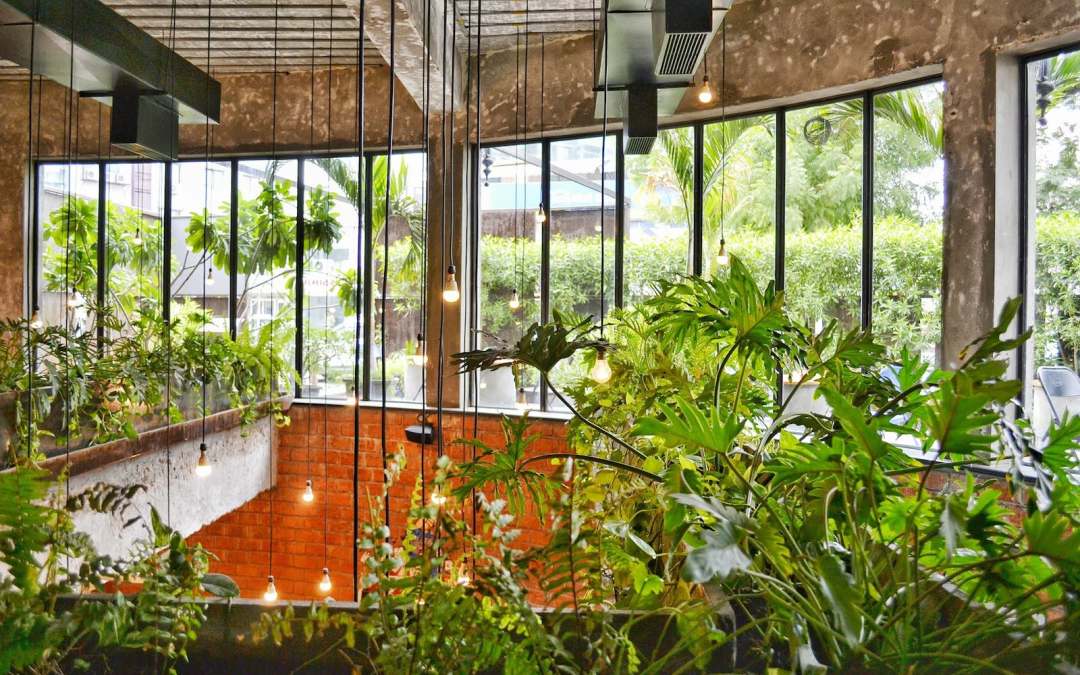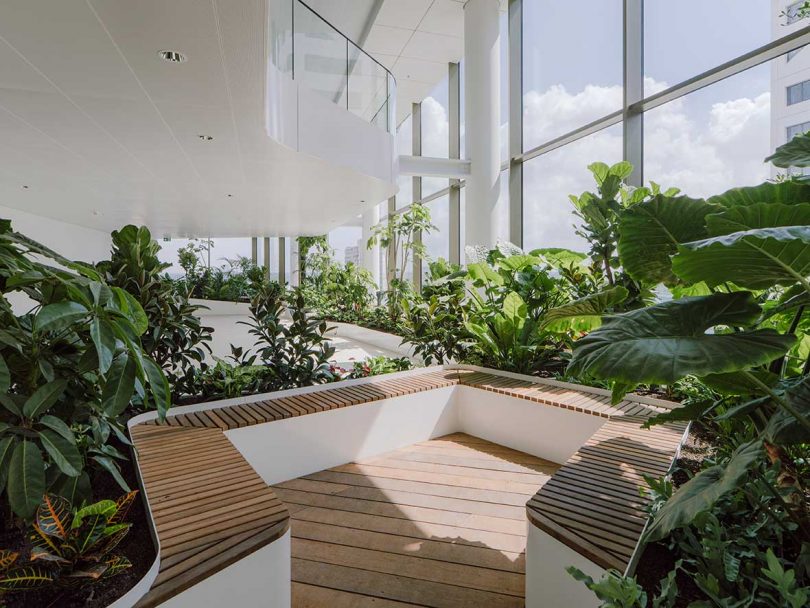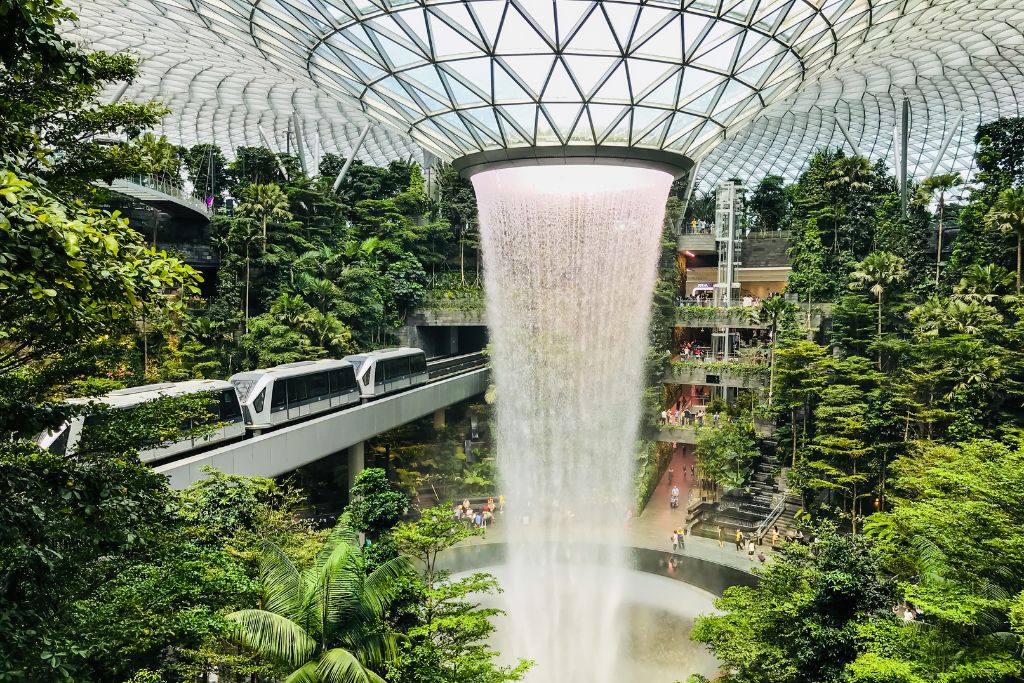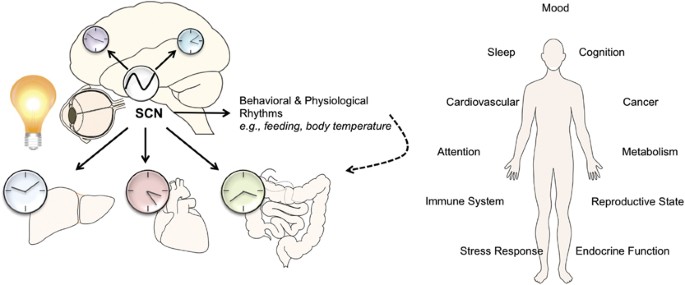The Connection Between Biophilic Design and Physical Well-Being.
Biophilic design extends beyond mere aesthetic consideration; it serves a vital function in enhancing physical well-being.
By integrating elements of nature into various environments, it is possible to significantly reduce stress, improve air quality, and enhance overall health.
This discourse examines the key components of biophilic design, its advantages for both mental and physical health, and practical strategies for incorporating these natural elements into different spaces.
Understanding how the integration of natural elements can positively impact living and working environments is essential for fostering improved well-being.
Why Is Biophilic Design Important for Physical Well-Being?
.jpg_00.jpeg)
Biophilic design is instrumental in enhancing physical well-being by fostering a profound connection to nature within the environments we inhabit.
This design approach is grounded in the principles of environmental design and ecological design, which underscore the significance of integrating natural elements into our daily spaces.
By incorporating features such as natural light, green spaces, and indoor plants, biophilic design creates restorative environments that effectively reduce stress and anxiety levels while promoting mindfulness and tranquility.
These design strategies are not only aesthetically appealing but also contribute to improved psychological health and emotional resilience.
Ultimately, the implementation of biophilic design can lead to enhanced overall physical health and a greater sense of well-being, highlighting the health benefits associated with this approach.
1. Reduces Stress and Anxiety
Biophilic design plays a crucial role in significantly reducing stress and anxiety by integrating elements from nature, thereby fostering a calming and restorative atmosphere. Research has demonstrated that exposure to natural elements in design can result in lower cortisol levels and an enhancement in emotional well-being.
The incorporation of indoor plants not only improves visual aesthetics but also contributes to air purification, thereby creating a healthier environment that promotes psychological resilience.
Furthermore, studies indicate that workplaces utilizing natural materials, such as wood and stone, enhance focus and productivity, which further supports emotional health. The presence of greenery has also been correlated with increased creativity and cognitive function, enabling individuals to manage stress more effectively.
By integrating the soothing properties of nature with constructed environments, individuals can experience significant benefits that transcend mere aesthetics, ultimately elevating overall quality of life while nurturing mental stability.
2. Improves Air Quality
One of the significant advantages of biophilic design is its capacity to enhance air quality through the integration of indoor plants and natural ventilation strategies. This approach not only improves the overall health of occupants but also fosters environmental sustainability.
Numerous studies have demonstrated that indoor plants can reduce levels of various air pollutants, including formaldehyde, benzene, and volatile organic compounds (VOCs), by as much as 87% within a 24-hour period. This remarkable filtration capability contributes to a healthier living environment, which ultimately corresponds to fewer respiratory issues and improved cognitive function among occupants.
Moreover, research indicates that enhanced air quality can lead to an increase in work productivity by approximately 15%. By incorporating elements of ecological design and environmental sustainability that prioritize health promotion through greenery, spaces can transform into sanctuaries that nurture well-being while simultaneously connecting inhabitants to the natural world.
3. Increases Physical Activity
Incorporating biophilic design into spaces significantly enhances physical activity by creating environments that promote movement and foster interactions with nature. This approach includes the integration of outdoor environments, walking paths, and community design strategies that encourage active living.
By improving access to natural elements and facilitating social interactions, this design philosophy cultivates a vibrant community atmosphere that increases the likelihood of individuals engaging in recreational activities.
Research indicates that individuals residing in environments abundant in greenery experience lower levels of stress and enhanced mental well-being, which ultimately contributes to more active lifestyles.
Urban planning that prioritizes green spaces and pedestrian-friendly designs encourages residents to explore their neighborhoods on foot or by bicycle, thereby improving overall physical health.
As individuals establish connections with both nature and their neighbors, they develop a sense of belonging that underscores the significance of community engagement and collective well-being.
4. Enhances Mood and Mental Health
Biophilic design significantly enhances mood and mental health by fostering a strong connection with nature, which has been associated with improved psychological well-being and emotional resilience. This connection allows individuals to feel more engaged and satisfied within their environments.
When spaces incorporate elements such as natural lighting, greenery, and organic materials, they not only achieve visually appealing aesthetics but also promote a sense of well-being. Research has demonstrated that workspaces enriched with plants can lower stress levels and enhance productivity among employees, contributing to workplace wellness.
A prominent example is the Amazon headquarters, designed with indoor gardens and living walls, which not only beautifies the office but also ensures that employees maintain a connection with natural elements throughout their workday.
Such deliberate implementations illustrate that meaningful interactions with one’s surroundings can significantly enhance mental clarity and emotional balance, demonstrating the psychological benefits of biophilic design.
What Are the Elements of Biophilic Design?
The elements of biophilic design are varied and crucial for developing spaces that enhance both physical and emotional well-being.
Key components encompass:
- natural light,
- views of nature,
- the utilization of natural materials,
- and the integration of indoor plants.
These features facilitate a harmonious interaction with the environment, enhancing visual aesthetics while also promoting a profound sense of connectedness to nature.
1. Natural Light
.jpg_01.jpeg)
Natural light is an essential component of biophilic design, significantly impacting light quality and the circadian rhythms of individuals within a given space. Research has demonstrated that access to natural light enhances mood and productivity while fostering a stronger connection to the outdoors, thereby offering substantial psychological benefits.
Studies indicate that exposure to natural light can assist in the synchronization of an individual’s internal body clock, resulting in improved sleep patterns and enhanced mental clarity. A study published in the Journal of Clinical Sleep Medicine revealed that individuals with greater access to daylight reported higher overall emotional well-being and increased alertness throughout the day.
Environments abundant in natural light can enhance cognitive function and creative problem-solving abilities, thereby improving both personal well-being and workplace performance. Therefore, it is clear that incorporating sufficient daylight not only supports physical health but also plays a pivotal role in enhancing productivity and emotional equilibrium, underscoring the importance of environmental psychology in architectural biophilia.
2. Views of Nature
Access to views of nature represents a fundamental component of biophilic design that can significantly influence psychological health and emotional well-being. Research indicates that having views of nature from indoor environments can reduce stress and promote a sense of tranquility and happiness.
Such environments not only enhance mood but also improve focus, creativity, and emotional intelligence, thereby enabling individuals to excel. The presence of greenery and natural elements fosters a calming atmosphere that promotes psychological resilience by encouraging relaxation and alleviating anxiety levels.
Individuals who regularly engage with natural views tend to report higher levels of life satisfaction and overall emotional stability. These advantages arise from the intrinsic human connection to the natural world, which can yield restorative effects, creating a harmonious balance between indoor living and the external environment. This underscores the well-being metrics that are essential in architectural biophilia.
3. Natural Materials
The incorporation of natural materials in biophilic design fosters an aesthetically pleasing environment that aligns with principles of ecological aesthetics and sustainability. These materials not only enhance visual appeal but also contribute to a sense of comfort and well-being, impacting occupant comfort positively.
By integrating elements such as reclaimed wood, stone, and clay into architectural spaces, the design establishes a connection with nature that calms and soothes the senses. This connection is a key aspect of human-nature interaction, providing a therapeutic environment. For example, wood provides warmth and texture while also improving indoor air quality, thereby supporting overall health. Similarly, the use of natural stone imparts a sense of grounding and stability, while clay offers excellent acoustic properties that enhance the sensory experience.
Furthermore, the inclusion of plants and other living materials enriches the atmosphere, serving as a reminder of the beauty inherent in the natural world. This approach reinforces the principles of sustainable design and promotes emotional well-being within the built environment, further demonstrating the effectiveness of biophilic design interventions.
4. Indoor Plants
Indoor plants serve as a fundamental element of biophilic design, significantly enhancing indoor environments and fostering a connection to nature. By improving air quality and offering therapeutic benefits, these plants contribute to overall health and well-being, reinforcing the psychological benefits and emotional health of occupants.
The incorporation of a diverse range of indoor plants, such as peace lilies, snake plants, and pothos, can have a profound positive impact on emotional health, cognitive function, and resilience. These plants contribute to a more nurturing environment, promoting tranquility and well-being.
- Peace lilies not only exhibit elegant blooms but also demonstrate exceptional efficacy in filtering toxins, thereby aiding in the creation of a serene atmosphere conducive to relaxation.
- Snake plants are particularly resilient and are renowned for their oxygen-producing capabilities, which enhance mental clarity.
- Additionally, pothos plants are admired for their cascading vines and are believed to reduce stress, thereby fostering a more inviting indoor ambiance.
Engaging with these various plants can serve as a form of nature therapy, providing a sense of tranquility and enhancing overall mood. Such interactions highlight the importance of human-nature interaction and contribute to personal mindfulness and psychological resilience.
How Can Biophilic Design Be Incorporated into Spaces?
Incorporating biophilic design into architectural spaces necessitates the implementation of strategic approaches that prioritize the integration of natural elements and the use of architectural features that enhance the user experience. This involves using design principles that focus on sensory experiences and ecological balance, promoting a harmonious environment.
Such methodologies have the potential to transform environments into spaces that promote healing and positively impact both physical and emotional well-being.
1. Incorporating Natural Light
Incorporating natural light into architectural spaces can be effectively achieved through thoughtful design principles, including strategic window placement and the integration of skylights. This approach not only enhances the quality of light but also fosters a more inviting atmosphere that connects occupants to the natural environment, supporting psychological benefits and well-being.
To maximize the influx of daylight, architects frequently consider the orientation of the building, positioning windows to align with the sun’s path and employing reflective surfaces to distribute light throughout the interior effectively.
The utilization of advanced technologies such as light tubes can channel sunlight into deeper areas of a structure, while operable windows facilitate ventilation, contributing to a fresh and vibrant atmosphere.
The importance of these methods goes beyond mere aesthetics; research indicates that exposure to natural light has a positive impact on mood, productivity, and overall health by regulating circadian rhythms. Consequently, these design strategies significantly contribute to the well-being of individuals occupying the space.
2. Adding Views of Nature
.jpg_10.jpeg)
Incorporating views of nature can be achieved through strategic building orientation and the implementation of large windows or glass walls, which facilitate seamless transitions between indoor and outdoor environments. This approach not only enhances visual aesthetics but also fosters a deeper connection with the natural surroundings.
By carefully considering landscape design and site planning, one can effectively frame these views by integrating pathways, terraces, and gardens that draw attention to natural elements. The thoughtful selection of plant species further enhances visual engagement, as native plants tend to thrive with minimal maintenance and blend harmoniously with the environment, promoting biodiversity and environmental sustainability.
Additionally, the strategic placement of outdoor seating areas invites residents and visitors to immerse themselves in these scenic vistas, ensuring that the beauty of nature is not merely observed from indoors but experienced firsthand.
Ultimately, these design strategies emphasize the importance of creating spaces that honor and reflect the surrounding nature, thereby promoting a sense of tranquility, community health, and well-being. This approach also supports urban ecology and adaptive design principles.
3. Using Natural Materials
Utilizing natural materials in biophilic design involves the careful selection of sustainable options that embody ecological aesthetics and foster a healthy indoor environment. This includes materials such as wood, stone, and bamboo, which significantly contribute to the overall sensory experience and support the principles of green architecture and environmental sustainability.
These elements not only enhance the visual appeal of a space but also improve air quality and mitigate stress levels, thereby serving as essential components of ecological design. The tactile qualities of natural materials promote a deeper connection between individuals and their environments, further enriching the user experience.
By prioritizing health promotion through the incorporation of such materials, designers can create environments that nurture well-being, ultimately encouraging occupants to feel more grounded and connected.
Moreover, integrating natural textures and colors can evoke a sense of calm, leading to a more productive and harmonious atmosphere.
4. Incorporating Indoor Plants
Incorporating indoor plants into various spaces can create a vibrant atmosphere that enhances both aesthetics and health benefits. This practice not only improves air quality but also provides therapeutic environments that promote emotional well-being.
Research indicates that these natural elements can significantly alleviate stress, making them a crucial addition to both home and work environments. By embracing diverse plant styles, such as succulents and hanging plants, individuals can cultivate a deeper connection to nature, thereby fostering emotional resilience and mindfulness.
The act of caring for plants can function as a form of nature therapy, inviting moments of calm and reflection into daily routines. With strategic placement and careful selection, indoor greenery has the potential to transform any space, offering both visual appeal and a sanctuary for mental rejuvenation. This practice supports the principles of nature-driven design and enhances lifestyle design by encouraging mindfulness and emotional intelligence.
What Are the Benefits of Biophilic Design for Physical Well-Being?
The benefits of biophilic design for physical well-being are substantial, encompassing an extensive array of health advantages that enhance both physical health and cognitive function. The integration of natural elements promotes emotional resilience and supports holistic design approaches, improving community spaces and social well-being.
By promoting a connection to nature, biophilic design can significantly enhance emotional resilience and overall well-being.
1. Improves Overall Health
Biophilic design enhances overall health by creating environments that support wellness and promote holistic health practices. This design philosophy fosters a vital connection to nature, which is essential for the development of restorative environments. It aligns with wellness architecture and emphasizes the importance of ecological design and sustainable urban design strategies.
Numerous studies indicate that incorporating natural elements into living and working spaces can significantly reduce stress levels, improve mood, and enhance overall productivity. For example, research published in the Journal of Environmental Psychology demonstrates that exposure to greenery and natural light can decrease cortisol levels and promote mental well-being. In healthcare settings, biophilic design has been associated with shorter recovery times and improved patient outcomes, as evidenced by hospitals that integrate views of nature and indoor gardens.
By aligning spaces with natural elements, individuals can experience heightened feelings of tranquility and rejuvenation. Consequently, biophilic design emerges as a foundational aspect of health promotion and serves as a catalyst for holistic health. It fosters social interaction and occupant comfort, reinforcing the psychological resilience and happiness of individuals in these environments.
2. Boosts Immune System
Biophilic design has been demonstrated to enhance the immune system by reducing stress and fostering environments that promote exposure to nature. Such environments facilitate physiological responses that contribute to overall health and support the principles of environmental psychology and healing spaces.
Research indicates that individuals immersed in natural settings or visually connected to nature experience a significant reduction in stress hormone levels. For example, a study published in the journal Environmental Health Perspectives revealed that participants exposed to greenery reported lower levels of anxiety and an improved mood. This decrease in stress not only enhances emotional well-being but also aids in the regulation of immune function, as chronic stress is recognized to suppress immune responses.
Furthermore, biophilic design can improve cognitive function and encourage social interactions, both of which are essential for maintaining psychological health and ultimately supporting a stronger immune system.
3. Increases Productivity
.jpg_11.jpeg)
Biophilic design has the potential to significantly enhance productivity by improving cognitive function and creating environments that foster engagement and creativity. The incorporation of nature-inspired elements contributes to a more focused and productive atmosphere, reinforcing the importance of workplace wellness and design effectiveness.
Research indicates that workplaces enriched with natural light, living plants, and organic materials result in higher levels of employee satisfaction and well-being. For example, a study published in the Journal of Experimental Psychology demonstrated that working in environments characterized by natural aesthetics can increase focus by up to 15%. Additionally, educational settings that integrate biophilic elements, such as green walls and outdoor learning spaces, have been associated with improved concentration and academic performance among students.
This highlights the critical role of wellness architecture, which not only enhances the visual appeal of spaces but also cultivates a stronger connection to the natural world, ultimately benefiting cognitive function and overall productivity.
4. Promotes Restful Sleep
Biophilic design enhances the quality of sleep by supporting natural circadian rhythms through the integration of natural light and views of nature, thereby strengthening the connection to the outdoors. This connection is essential for achieving restorative sleep.
Research has demonstrated that exposure to natural light during the day is a critical factor in regulating sleep patterns and overall health. For example, individuals who have access to daylight and other natural elements in their living or working environments tend to experience greater ease in falling asleep and often awaken feeling more refreshed and happier.
Additionally, views of nature and the integration of greenery have a significant impact on emotional well-being, effectively reducing stress and anxiety levels, which are frequently barriers to restful sleep. Studies indicate that environments enriched with natural elements and natural materials not only improve sleep quality but also contribute to overall health, promoting a balanced lifestyle that fosters both physical and mental rejuvenation.
Frequently Asked Questions
What is biophilic design and its connection to nature?
Biophilic design is an approach to designing spaces that incorporate elements of nature and biodiversity to create a connection between people and their surroundings, enhancing emotional health and well-being.
How does biophilic design impact physical well-being and productivity?
Biophilic design has been shown to have positive effects on physical well-being, such as reducing stress levels, improving cognitive function and productivity, and promoting better sleep and overall health.
What are some examples of biophilic design elements and their psychological benefits?
Some examples of biophilic design elements include natural light, indoor plants, natural colors and materials, views of nature, and sensory experiences that enhance psychological benefits and well-being.
Can biophilic design be implemented in any space, including community spaces?
Yes, biophilic design can be incorporated into any type of space, whether it’s a home, office, or community space. It can also be adapted to different styles and budgets, enhancing both aesthetics and occupant comfort.
How does biophilic design benefit the environment and promote sustainability?
Biophilic design can benefit the environment by promoting sustainable practices, such as using recycled materials, ecological design, and reducing energy consumption. It can also help to create a healthier ecosystem for plants, animals, and overall environmental sustainability.
Is biophilic design just a trend or is it here to stay in urban design and architecture?
Biophilic design is not just a passing trend, but a growing movement in urban design and architecture. As more research is conducted on its benefits, it is becoming a more widely accepted approach to creating healthier and more sustainable spaces, contributing to both physical and mental well-being.

I’m Bruno, an architect with a deep passion for Biophilic Design in Urban Architecture. Throughout my career, I’ve focused on integrating natural elements into urban planning, and I created this site to share my insights and foster a deeper understanding of how biophilic principles can significantly enhance urban living. Dedicated to sustainable development, I continually explore innovative design solutions that promote both environmental and human well-being in city landscapes.














Publicar comentário